#alau art
Text
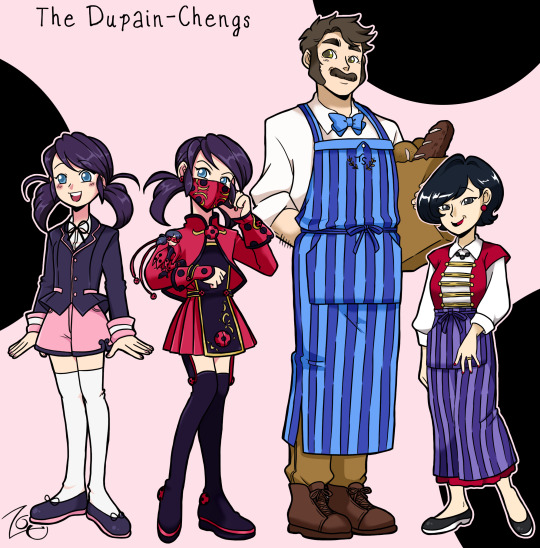
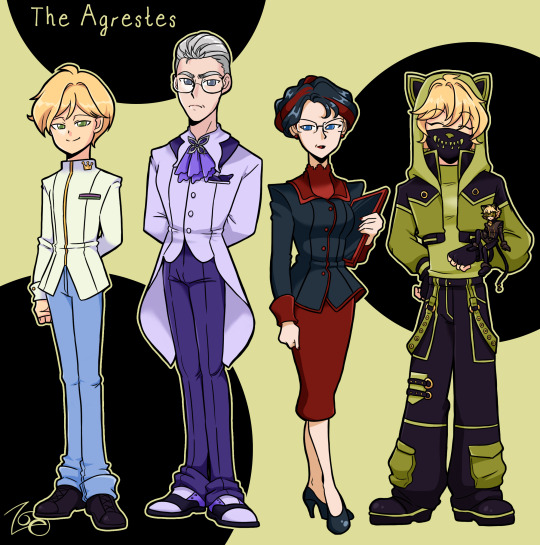

A first look at the final designs for The Agrestes and Dupain-Chengs for my Angelic Layer AU! It's a special challenge to make some of the more...cartoonish? adults fit the CLAMP art style, so, look forward to that!
Ko-fi | Patreon
#angelic layer au#alau#my art#ml au#marinette#adrien#ladybug#chat noir#sabine#tom#nathalie#gabriel#would you like to see Alya and Nino's families next or the human kwamis?#alau art
5K notes
·
View notes
Text

Eastern eyed click beetle; Alaus oculatus
This bro was massive; the length of my thumb at least. Had no idea there were click beetles that could get that big.
Click beetles have an interesting ability; they have an organ on their underside that can be loaded to build up the energy needed to launch them into the air to right themselves if they end up their backs (and it frightens predators, too!). They get their name from the distinctive "click" noise the organ makes when it unlatches.
-----------------------
Check out my art blog: bugbeast.me - I just released a card game, and you can play it with a normal deck of cards!
#bugbeast#entemology#bug facts#bugs#insecta#insects#arthropoda#arthropods#bugblr#photography#nature#nature photography#animals#cute animals#cute bugs#cool bugs#beetles#click beetle#eastern eyed click beetle#elateridae
2 notes
·
View notes
Photo

anthony fineran (b 1981), caina alau, 2021
1 note
·
View note
Text
Jebakan Tersembunyi dalam Mengambil Keputusan
“If decision-making is a science, then judgment is an art”, - Advance Leadership Initiative Harvard University.
Hari ini saya ingin sedikit mengulas sedikit materi yang ada saya pelajari di mata kuliah Strategic Decision Making & Negotiation di kampus. Menurut saya materi ini menarik untuk di share di blog ini mengingat materi ini bisa menjadi salah satu sumber kesalahan ketika kita mengambil keputusan, khususnya membeli barang. Judulnya The Hidden Traps in Decision Making dari salah satu artikel Harvard Business Review. Saya coba sederhanakan bahasanya biar lebih mudah dipahami sama temen-temen minimalis. Have a nice read.

Sebenarnya pengantarnya sederhana kenapa kita harus belajar ini, sadar ga sih kadang dalam membuat keputusan, terkadang kita suka keliru. Ini bisa terjadi karena banyak faktor dan yang paling krusial adalah ketika kita membuat keputusan tanpa data. Akui saja kadang kita tiba-tiba membeli barang, tapi kita tidak mengetahui manfaat barang tersebut. Asal diskon langsung check out, atau kadang kita menyesal setelah membeli suatu barang setelah kita membelinya dan mengetahui ada yang harganya lebih murah. Nah ternyata kesalahan kesalahan kaya gini ada ilmu nya dan itu semua dipelajari di tempat saya studi. Contoh nih yang saya rasakan beberapa tahun lalu dan kadang kocak kalau mengingat momen itu.
Saya bersama seorang teman dari Bogor datang ke salah satu pusat elektonik yang ada di Bandung. Niatnya sih saya mau nganter temen yang saat itu mau membeli peralatan untuk memenuhi kebutuhan PKL-nya di Lembang. Eh ternyata pas kesana. Teman saya tidak jadi membeli apapun dan malah saya tiba-tiba membeli laptop baru. Padahal laptop lama masih ada. Terus pas sudah di jalan baru mikir kenapa harus beli laptop ini ya. Padahal sebenernya laptop yang ada di kosan pun masih bagus. Emang sih beda brand, tapi rasa-rasanya laptop yang dulu masih sangat-sangat bagus.
Contoh kocak diatas dinamakan The Sunk-Cost Trap. Biar temen-temen minimalis tidak terjebak dengan jebakan-jebakan tersembunyi ini. Mari kita bahas satu per satu.
The Anchoring Trap
Contoh nya ketika kita ditanya apakah populasi turki lebih besar dari 35 juta orang? terus pertanyaan kira kira berapa jumlah aslinya sesuai prediksi terbaik kita? Pertanyaan nomor satu biasanya mempengaruhi pertanyaan kedua. Ini kondisinya kita engga tau berapa jumlah asli populasi Turki. Terus karena pertanyaan kedua nanya berapa jumlah aslinya di saat mindset kita sudah terpengaruh kalau turki itu lebih dari 35 juta. Terus kita so so an jawab beberapa juta diatas 35 juta. Ternyata jawaban nya bahkan kurang dari 35 juta heu. Sederhananya Anchoring Trap ini kaya semacam penggiringan opini agar dari beberapa pertanyaan sebelumnya.
The Status-Quo Trap
Sederhana nya ini seperti “biasanya”. Kita tidak mengambil keputusan karena “biasanya” orang juga tidak mengambil keputusan. Contoh nya adalah ketika kita main saham. “biasanya” sih orang orang tidak membeli saham di hari D, terus kita pun akhirnya memilih alternative aman untuk ngikutin orang-orang. Eh ternyata langkah itu salah. Nah disitu sudah terjadi yang namanya Status-Quo Trap. Di dalam artikel disebutin kalau kita harus memaksa diri kita untuk memilih. Jangan kebawa-bawa sama orang heu.
The Sunk-Cost Trap
Kalau di google sih arti ari Sunk-Cost itu yakni hangus biaya. Tapi apa ya arti sesungguhnya. Jadi kalau trap yang ini sering kali kita secara engga sadar memutuskan untuk mengerjakan sesuatu tanpa kita mengetahui kenapa sih harus ngelakuin ini. Istilah sederhananya mah ngalir aja. Contohnya adalah kasus yang tadi di awal.
The Confirming-Evidence Trap
Kalau ini sederhananya adalah “mencari pembenaran”. Contoh di artikel sih tentang ketika kita jadi CEO perusahaan yang mau ngebatalin ekspansi perusahaan yang udah direncanain. Sebelum tau nya, kita udah takut kalau bulan depan dollar lagi gak bagus dan ngebuat biaya produksi lebih mahal. Terus nanya ke bagian yang lain dan katanya engga ko bagus. Masih engga puas terus aja nanya nanya ke orang yang setuju dan bilang kalau keputusan yang akan kita ambil itu bener.
The Framing Trap
kalau ini katanya kesalahan dalam membuat keputusan yang dipengaruhi oleh pengalaman dramatis atau traumatis. Contoh nya ketika kita mau menyatakan perasaan kita kepada seorang perempuan. Tetiba di saat itu kita mikir mikir lagi untuk menyatakan perasaan itu karena pernah punya pengalaman trauma ditolak. Padahal bisa jadi ditolak lagi sih haha. Engga, maksudnya padahal bisa jadi diterima dan diminta langsung datang ke orang tuanya. Kan mantap tuh. Sebelum memutuskan kita sering membuat framing sendiri dulu heu.
The Estimating and Forecasting Traps
Contohnya kemungkinan harga oli lebih kecil daripada 15 USD per barel dengan kemungkinan 40%. Nah darimana itu kita ngomong 40%. tiba-tiba aja ada gitu. Biasanya kadang manager suka bilang gitu kalau di artikel. Nah disini kita sebagai manager pun ga bisa ngasih tau bener ga sih kemungkinan 40% itu. Tapi katanya ada tiga jebakan yang paling sering kita lakukan ketika memperkirakan dan juga forecasting:
I. The Overconfidence Trap
Ini contohnya yang tadi, ketika kita terlalu pede mengambil suatu keputusan tanpa mempertimbangkan baik-baik.
II. The Prudence Trap
Sering ketika menghadapi taruhan tinggi, kita buat menyesuaikan estimasi kita dengan sesuatu yang namanya “just to be on the safe side”. Contoh di artikel katanya beberapa taun lalu ada satu dari tiga perusahaan pembuat mobil di US. Mereka memutuskan berapa banyak model yang harus di produksi dalam mengantisipasi musim penjualan tersibuk mereka. Mengetahui tujuan estimasi nya, setiap department memutuskan untuk memiringkan forecasting nya (buat banyak mobil). Eh ternyata setelah banyak produksi, mobil yang dibuat terlalu melebihi permintaan dan butuh enam bulan untuk menjual sisanya dan akhirnya menggunakan strategi promosi deh. Waduh kasian juga ya.
III. The recallability Trap
Katanya pengalaman dramatis atau traumatis berpengaruh disini. ketika kita berangkat kerja, kita bakal nge estimasiin bakal macet karena kita pernah ngalamin itu sebelumnya atau kita akan estimasi meninggal karena kanker karena temen deket kita meninggal karena itu.
Nah kan sadar ga sadar semua itu pernah terjadi di diri kita dan ternyata ada istilah-istilahnya. Sebenernya ada juga sih cara cara ngelawan nya gimana. Selebihnya bisa dibaca di artikelnya. Untuk tulisan kali ini, saya coba perkenalkan istilahnya terlebih dahulu. Semoga di post selanjutnya, kita bisa membahas solusi untuk jebakan-jebakan ini. Semoga bermanfaat. Salam minimalis
@ryanfryzky | menjadiminimalis.com
6 notes
·
View notes
Photo






Last post for a bit now, OTL. Just some character sketches featuring: Unnamed Demon, Yasir, Unnamed Demon, Alaus, Andras & Sotiris.
Art, Character © @schuis - 2018
( DeviantArt - Twitter - Commissions - Buy Me A Coffee )
5 notes
·
View notes
Text
Galerna Alau atunero para Albacora por Armon Gijon.
Galerna Alau atunero para Albacora por Armon Gijon.
” Atunero Galerna Lau” llego al puerto de Vigo para finalizarlo y darle los últimos retoques y una vez finalizado pertrechar con las artes de pesca y ponerlo a punto para su propietario la casa armadora de Albacora es uno de los mejores atuneros de última tecnología construido en los astilleros de Armón Gijon shipyard.

Tiene unas dimensiones de 95 metros de eslora por 15 de manga y un arqueo…
View On WordPress
0 notes
Text
The Muslim Conquest of India
Posted on September 3, 2010
How many people know that “Hindu Kush” means “Hindu Slaughter”?
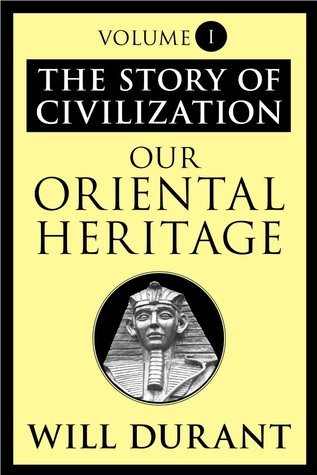
The Muslim Conquest OF INDIA
(Chapter 6 of‘The Story of Civilization’- Vol. 1)
By Will & Ariel Durant
The Mohammedan Conquest of India is probably the bloodiest story in history. It is a discouraging tale, for its evident moral is that civilization is a precarious thing, whose delicate complex of order and liberty, culture and peace may at any time be overthrown by barbarians invading from without or multiplying within. The Hindus had allowed their strength to be wasted in internal division and war; they had adopted religions like Buddhism and Jainism, which unnerved them for the tasks of life; they had failed to organize their forces for the protection of their frontiers and their capitals, their wealth and their freedom, from the hordes of Scythians, Huns, Afghans and Turks hovering about India’s boundaries and waiting for national weakness to let them in. For four hundred years (600-1000 A.D.) India invited conquest; and at last it came.
The first Moslem attack was a passing raid upon Multan, in the western Punjab (664 A.D.) Similar raids occurred at the convenience of the invaders during the next three centuries, with the result that the Moslems established themselves in the Indus valley about the same time that their Arab co-religionists in the West were fighting the battle of Tours (732 A.D.) for the mastery of Europe. But the real Moslem conquest of India did not come till the turn of the first millennium after Christ.
In the year 997 a Turkish chieftain by the name of Mahmud became sultan of the little state of Ghazni, in eastern Afghanistan. Mahmud knew that his throne was young and poor, and saw that India, acrossthe border, was old and rich; the conclusion was obvious. Pretending a holy zeal for destroying Hindu idolatry, he swept across the frontier with a force inspired by a pious aspiration for booty. He met the unprepared Hindus at Bhimnagar, slaughtered them, pillaged their cities, destroyed their temples, and carried away the accumulated treasures of centuries. Returning to Ghazni he astonished the ambassadors of foreign powers by displaying “jewels and unbored pearls and rubies shining like sparks, or like wine congealed with ice, and emeralds like fresh sprigs of myrtle, and diamonds in size and weight like pomegranates.”
Each winter Mahmud descended into India, filled his treasure chest with spoils, and amused his men with full freedom to pillage and kill; each spring he returned to his capital richer than before. At Mathura (on the Jumna) he took from the temple its statues of gold encrusted with precious stones, and emptied its coffers of a vast quantity of gold, silver and jewelry; he expressed his admiration for the architecture of the great shrine, judged that its duplication would cost one hundred million dinars and the labor of two hundred years, and then ordered it to be soaked with naphtha and burnt to the ground. `Six years later he sacked another opulent city of northern India, Somnath, killed all its fifty thousand inhabitants, and dragged its wealth to Ghazni. In the end he became, perhaps, the richest king that history has ever known. Sometimes he spared the population of the ravaged cities, and took them home to be sold as slaves; but so great was the number of such captives that after some years no one could be found to offer more than a few shillings for a slave. Before every important engagement Mahmud knelt in prayer, and asked the blessing of God upon his arms. He reigned for a third of a century; and when he died, full of years and honors, Moslem historians ranked him as the greatest monarch of his time, and one of the greatest sovereigns of any age.
Seeing the canonization that success had brought to this magnificent thief, other Moslem rulers profited by his example, though none succeeded in bettering his instruction. In 1186 the Ghuri, a Turkish tribe of Afghanistan, invaded India, captured the city of Delhi, destroyed its temples, confiscated its wealth, and settled down in its palaces to establish the Sultanate of Delhi- an alien despotism fastened upon northern India for three centuries, and checked only by assassination and revolt. The first of these bloody sultans, Kutb-dDin Aibak, was a normal specimen of his kind – fanatical, ferocious and merciless. His gifts, as the Mohammedan historian tells us, “were bestowed by hundreds of thousands, and his slaughters likewise were by hundreds of thousands.” In one victory of this warrior (who had been purchased as a slave), “fifty thousand men came under the collar of slavery, and the plain became black as pitch with Hindus.”
Another sultan, Balban, punished rebels and brigands by casting them under the feet of elephants, or removing their skins, stuffing these with straw, and hanging them from the gates of Delhi. When some Mongol inhabitants who had settled in Delhi, and had been converted to Islam, attempted a rising, Sultan Alau-d-din (the conquerer of Chitor) had all the males – from fifteen to thirty thousand of them – slaughtered in one day. Sultan Muhammad bin Tughlak acquired the throne by murdering his father, became a great scholar and an elegant writer, dabbled in mathematics, physics and Greek philosophy, surpassed his predecessors in bloodshed and brutality, fed the flesh of a rebel nephew to the rebel’s wife and children, ruined the country with reckless inflation, and laid it waste with pillage and murder till the inhabitants fled to the jungle. He killed so many Hindus that, in the words of a Moslem historian, “there was constantly in front of his royal pavilion and his Civil Court a mound of dead bodies and a heap of corpses, while the sweepers and executioners were wearied out by their work of dragging” the victims “and putting them to death in crowds.”
In order to found a new capital at Daulatabad he drove every inhabitant from Delhi and left it a desert; and hearing that a blind man had stayed behind in Delhi, he ordered him to be dragged from the old to the new capital, so that only a leg remained of the wretch when his last journey was finished.
The Sultan complained that the people did not love him, or recognize his undeviating justice. He ruled India for a quarter of a century, and died in bed. His successor, Firoz Shah, invaded Bengal, offered a reward for every Hindu head, paid for 180,000 of them, raided Hindu villages for slaves, and died at the ripe age of eighty. Sultan Ahmad Shah feasted for three days whenever the number of defenseless Hindus slain in his territories in one day reached twenty thousand.
These rulers were often men of ability, and their followers were gifted with fierce courage and industry; only so can we understand how they could have maintained their rule among a hostile people so overwhelmingly outnumbering them. All of them were armed with a religion militaristic in operation, but far superior in its stoical monotheism to any of the popular cults of India; they concealed its attractiveness by making the public exercise of the Hindu religions illegal, and thereby driving them more deeply into the Hindu soul.
Some of these thirsty despots had culture as well as ability; they patronized the arts, and engaged artists and artisans- usually of Hindu origin- to build for them magnificent mosques and tombs; some of them were scholars, and delighted in converse with historians, poets and scientists. One of the greatest scholars of Asia, Alberuni, accompanied Mahmud of Ghazni to India, and wrote a scientific survey of India comparable to Pliny’s “Natural History” and Humboldt’s “Cosmos”.
The Moslem historians were almost as numerous as the generals, and yielded nothing to them in the enjoyment of bloodshed and war. The Sultans drew from the people every rupee of tribute that could be exacted by the ancient art of taxation, as well as by straightforward robbery; but they stayed in India, spent their spoils in India, and thereby turned them back into India’s economic life. Nevertheless, their terrorism and exploitation advanced that weakening of Hindu physique and morale which had been begun by an exhausting climate, an inadequate diet, political disunity, and pessimistic religions.
The usual policy of the Sultans was clearly sketched by Alau-d-din, who required his advisers to draw up “rules and regulations for grinding down the Hindus, and for depriving them of that wealth and property which fosters disaffection and rebellion.”
Half of the gross produce of the soil was collected by the government; native rulers had taken one-sixth. “No Hindu,” says a Moslem historian, “could hold up his head, and in their houses no sign of gold or silver… or of any superfluity was to be seen…. Blows, confinement in the stocks, imprisonment and chains, were all employed to enforce payment.” When one of his own advisers protested against this policy, Alau-d-din answered: “Oh, Doctor, thou art a learned man, but thou hast no experience; I am an unlettered man, but I have a great deal. Be assured, then, that the Hindus will never become submissive and obedient till they are reduced to poverty. I have therefore given orders that just sufficient shall be left to them from year to year of corn, milk and curds, but that they shall not be allowed to accumulate hoards and property.” This is the secret of the political history of modern India.
Weakened by division, it succumbed to invaders; impoverished by invaders, it lost all power of resistance, and took refuge in supernatural consolations; it argued that both mastery and slavery were superficial delusions, and concluded that freedom of the body or the nation was hardly worth defending in so brief a life. The bitter lesson that may be drawn from this tragedy is that eternal vigilance is the price of civilization. A nation must love peace, but keep its powder dry.
0 notes
Text
Lithuania – today the most westerly of the Baltic trio that includes Estonia and Latvia, but in the past the capital of the medieval Grand Duchy of Lithuania, which united with Poland in 1569, until it was incorporated into Russia in the late 18th century. Medieval Lithuania was for a time one of the largest states of Central Europe, extending southeast from today’s Lithuania, controlling what are now parts of Poland, Russia, Belarus and Ukraine, and played a decisive part in defeating Mongol invaders in the 15th Century.
Gedimas Castle Tower, 15th Century.
Independent in 1918 after the collapse of the Russian empire, occupied by the Soviet Union in 1940, then by Germany until the Soviets returned and stayed between 1944 and 1991, Lithuania is independent again. Vilnius missed out on independence in 1918 however, as it was claimed by the also newly re-independent Poland. After back and forth between Lithuanian, Polish and Soviet forces it was annexed by Poland in 1922, remaining under Polish control until the Soviets occupied Poland in 1939. The Lithuanian government was able to regain control of the city for a brief time until 1940 in exchange for Soviet military basing in the country.
Apart from some medieval remnants, Vilnius has a mix of Polish renaissance and baroque architecture, a lot of functional 19th century Russian buildings that give a typical Eastern European feel, balanced out by Baltic German buildings and of course postwar Communist brutalist concrete.
There is a cathedral center next to the remnants of the original fortified city, highlighted by the 15th-century hilltop Gediminas Castle Tower. The Kalnu park just east of the tower is good for a stroll overlooking the Neris River.
Grand Duke Gedimas Statue
Like many former Soviet Bloc countries, Lithuania experienced the heavy hand of Soviet totalitarian oppression, and have converted the former KGB building into the Genocide Museum, at Auku 2A (immediately south of the City Courthouse at Gedimino 40). It’s a grim experience, but then so was being stuck behind the Iron Curtain.
Rather like the House of Terror in Budapest and the KGB Building in Riga, personnel record photos of the KGB staff – both Russian and local hires – were located post-independence and are displayed. I would not want to be interrogated by some of the characters who worked here. Lithuania had a partisan resistance movement based in its extensive forests, that ran from 1944 to about 1953 and which was eventually crushed, and so there was armed rebellion for some time. The museum also explains the role of Lithuanians in supporting the Nazi occupation and genocide between 1940 and 1944.
Of course, any fascist police state needs its finance department. You can just imagine the budget discussions and complaints from the Interrogation Division about how the bean counters are always getting in the way.
And because, whether it is GE, McKinsey or the KGB, people always come first, so your supportive HR team is here to help. These guys look like the more cooperative type.
What surprised me was that inmates at the much feared Vorkuta prison camp – part of the Gulag Archipelago described by Solzhenitsyn where many Lithuanians were deported to – got to send Christmas cards back home. The Northern Lights and the reindeer are a nice touch and the camps by 1955 might have been relatively liberal compared to the 1930s, but still quite rough and likely to wreck your health assuming you were ever able to leave. Lithuania experienced two major waves of deportations to the Soviet Union, in 1940 and then post-World War Two.
If this isn’t enough to absorb, you are reminded that Vilnius was one of the largest Eastern European Jewish communities (around 55,000) before WW2, with Lithuania having a significant Jewish population. Reminders of the Vilnius ghetto are placed at some of it’s entrances.
The Holocaust Exposition on Pamėnkalnio 12 is worth visiting, which records much of the Jewish community’s pre-war life as well as documentation of the genocide carried out once the area was occupied in 1941.
After that, a walk in the snow is a good idea. Some other places worth a look include:
Lithuanian Art Museum, Didžioji 4 – mainly regional art and a neat 19th century photographic exhibition.
National Museum, Arsenalo 1.
Palace of the Grand Dukes of Lithuania, Katedros 4.
Logistics. I stayed at the Shakespeare B&B on Bernadinu Street, close to the city center which was a comfortable and low-key place. The main culinary range is traditional Lithuanian through to more modern Baltic/Scandinavian-style places, along with traditional Eastern bloc favorites such as Georgian. A few recommendations are:
Etno Dvaras, Pilies 16 – a local chain that hits all the high points for Lithuanian cooking. Not elaborate but a good menu and reasonable prices.
Busi Trecias, Totoriu 18 – traditional pub restaurant that brews its own beer.
Lokys, Stikliu 10 – higher end new Lithuanian.
Aline Leiciai, Stikliu 4, – another casual local place.
A few places that are good for trying Lithuanian microbrews:
Alaus Biblioteka, Traku 4 – good range of taps and bottles and a lighter space. Staff are very helpful on the local recommendations. As ever in the Baltics, there is interesting craft beer with neat labels.
Bambalyne, Stikliu 7 – basement retreat with a good bottle selection.
The airport is a 10-minute cab or uber ride; and the railway station is about a 15-minute walk, located on the south side of the old town. You can buy your tickets on the train, so don’t need to mess around at ticket offices; just get on board.
Vilnius, Wilno, Vilna, Vilne Lithuania - today the most westerly of the Baltic trio that includes Estonia and Latvia, but in the past the capital of the medieval Grand Duchy of Lithuania, which united with Poland in 1569, until it was incorporated into Russia in the late 18th century.
0 notes
Text
Attendance at GSMA Mobile World Congress Shanghai 2018 Tops 60,000 Visitors
HONG KONG — The GSMA today reported that more than 60,000 unique visitors1 from 112 countries and territories attended the 2018 GSMA Mobile World Congress Shanghai, held 27-29 June in Shanghai. The three-day event attracted executives from the largest and most influential organisations across the mobile ecosystem, as well from companies in a range of vertical industry sectors. In addition to this business-to-business audience, nearly 8,800 consumers from the greater Shanghai metropolitan area attended the Migu Health and Fitness Festival, which was held in the Mobile World Congress Shanghai halls at the Shanghai New International Exhibition Centre (SNIEC).
“We are extremely pleased with the results for the 2018 Mobile World Congress Shanghai, particularly the very strong growth in our business-to-business segment,” said John Hoffman, CEO, GSMA Ltd. “Attendees were able to truly “Discover a Better Future”, from the thought leadership conference to the exhibition and everywhere in between. With more than two-thirds of the world’s population as subscribers, mobile is revolutionising industries and improving our everyday lives, creating exciting new opportunities while providing lifelines of hope and reducing inequality. Mobile truly is connecting everyone and everything to a better future.”
Covering seven halls at the SNIEC, the 2018 Mobile World Congress Shanghai hosted 550 exhibitors, nearly half of which come from outside of China. The conference programme attracted nearly 4,000 attendees, with more than 55 per cent of delegates holding senior-level positions, including nearly 320 CEOs. Nearly 830 international media and industry analysts attended Mobile World Congress Shanghai to report on the many industry developments highlighted at the show.
Mobile World Congress Shanghai officially opened on Wednesday, 27 June with a ceremony attended by representatives from the International Telecommunication Union, the China Ministry of Industry and Information Technology, the Cyberspace Administration of China, Shanghai local government authorities and the Pudong New District Municipal Government, among other distinguished guests.
Industry Leaders Headline Conference Programme
Held over three days, the Mobile World Congress Shanghai conference programme featured keynotes from leaders of organisations including AngelHack, AsiaInfo Technologies, AT&T Business, Benefit Vantage, Bharti Enterprises, China Mobile, China Telecom, Crown Infrastructure Partners, Dentsu Aegis Network China, Ericsson, FREE MEE, Huawei, Jazz, LightBee, SenseTime, Shell Retail China and Viacom International Media Networks.
The conference addressed a range of topics, from 5G and artificial intelligence (AI) to the Fourth Industrial Revolution and immersive content and media, among others. A new element this year was the Leaders Stage, which explored wide-ranging trends that are impacting citizens’ everyday lives, including digital society, blockchain, cyber security, big data and mobile payment technologies. Alongside the conference, Mobile World Congress Shanghai included many partner programmes and workshops, as well as GSMA forums and seminars.
The Women4Tech Programme made its Shanghai debut, following its success at Mobile World Congress events in Barcelona and in San Francisco. The centerpiece of the programme was the Women4Tech Summit, which was held on Thursday, 28 June on the Leaders Stage, and attendees also had the opportunity to participate in speed coaching and networking sessions.
Showcasing the Latest in Mobile Innovation
The Mobile World Congress Shanghai exhibition showcased hundreds of companies from across the mobile ecosystem as well as adjacent industry sectors. Notable participating companies included AsiaInfo Technologies, BYTON, China Mobile, China Telecom, China Transport Telecommunication Information Group, China Unicom, Datang, Dell, Ericsson, Gemalto, HTC Vive, Huawei, Intel, Lenovo, Nokia, OnStar, PwC, Qualcomm, Samsung LSI, Visa, vivo and Volkswagen, among others. New for 2018, the NEXTech Hall put the spotlight on cutting-edge technologies such as virtual reality and augmented reality, AI and robotics, and was also home to Connected China and the Device City, while the AutoTech Zone and the IoT Zone featured in other industry halls.
The GSMA Innovation City was again a highly popular destination on the exhibition floor, highlighting how “intelligent connectivity” – leveraging 5G, the Internet of Things, AI and big data – can deliver a smarter and more sustainable future. Visitors experienced these technologies and others through a range of hands-on demonstrations that illustrated the positive impact of mobile on virtually every aspect of life, in sectors such as transport, health, agriculture, industry, home and retail. Leading brands participating in the City were BICS, Continental, Huawei, Internet Finance Authentication Alliance (IFAA), Migu, myFC, PwC, Ratta, SI-TECH and Zhejiang Panshi Information Technology.
In its third year in Shanghai, the 4 Years From Now (4YFN) startup event hosted more than 130 international and local startups, including large delegations from South Korea, Spain and others. In addition to the exhibition, the 2018 4YFN programme delivered unique connecting initiatives, including inspirational talks, technical workshops, networking activities, community outreach and the 4YFN Summit and 4YFN Awards.
Co-Located and Partner Events Broaden Experiences for Attendees
Mobile World Congress Shanghai was held concurrently with a number of co-located and partner events. Attracting nearly 8,800 consumer attendees, the Migu Health and Fitness Festival highlighted the intersection of sports, entertainment and technology. The Festival offered a wide variety of exciting activities such as an e-sports competition, a music festival, a running competition, a sports exhibition, a sports technology summit, a sports-focused VR/AR Summit and others. Other events included Display China 2018, droidcon Shanghai 2018, the International Smart City Expo – Shanghai Pudong, the Shanghai International Service Robot Technology and Application Show 2018, and the S-Nova Art & Technology Award.
Mobile World Congress Shanghai: A Carbon Neutral Event
In November 2017, Mobile World Congress Shanghai was again officially certified by the British Standards Institution as carbon neutral under the international PAS 2060 standard, reinforcing its position as the largest carbon neutral exhibition and conference in Asia. For 2018, the GSMA focused on further reducing the environmental impact and carbon footprint of the event, offsetting any outstanding emissions as necessary. The GSMA is continuing to pursue certification of its offices and events, including Mobile World Congress Shanghai, for 2018.
Mobile World Congress Shanghai Partners
Partners for Mobile World Congress Shanghai 2018 included China Mobile (Diamond Event Partner) and Huawei (Platinum Event Partner). Media partners included CNN International and Mobile World Live (Global Media Partners); BBC World News and BBC.com, Bloomberg Businessweek, CCTV2 and LinkedIn (Official Media Partners); and C114, People’s Posts and Telecommunications News, and Tencent News (Strategic Media Partners).
“On behalf of the GSMA, I would like to thank all of our attendees, exhibitors, sponsors and partners who came together to make the 2018 edition of the Mobile World Congress Shanghai such a success,” added Hoffman. “We also extend our gratitude to the government of China and the city of Shanghai and we look forward to returning to Shanghai next year.”
For news coverage and video highlights from Mobile World Congress Shanghai, please visit Mobile World Live at www.mobileworldlive.com/mobile-world-congress-shanghai-2018/. Replays of the Mobile World Congress Shanghai keynote presentations are also available on Mobile World Live.
Mobile World Congress Shanghai 2019 will be held the week of 24 June 2019.
Note to editors:
1. This figure represents the number individual attendees at the event, including delegates, exhibitors, contractors and media; it does not represent the total number of entries to the event.
-ENDS-
About the GSMA
The GSMA represents the interests of mobile operators worldwide, uniting nearly 800 operators with more than 300 companies in the broader mobile ecosystem, including handset and device makers, software companies, equipment providers and internet companies, as well as organisations in adjacent industry sectors. The GSMA also produces industry-leading events such as Mobile World Congress, Mobile World Congress Shanghai, Mobile World Congress Americas and the Mobile 360 Series of conferences.
For more information, please visit the GSMA corporate website at www.gsma.com. Follow the GSMA on Twitter: @GSMA.
Contacts
Media:
For the GSMA
Ava Lau, +852 2533 9928
[email protected]
or
Beau Bass, +44 79 7662 4962
[email protected]
or
GSMA Press Office
[email protected]
View on www.BusinessWire.com
from Financial Post https://ift.tt/2lQRuod
via IFTTT Blogger Mortgage
Tumblr Mortgage
Evernote Mortgage
Wordpress Mortgage
href="https://www.diigo.com/user/gelsi11">Diigo Mortgage
0 notes
Text

For the Angelic Layer AU, I can't imagine Marinette being satisfied with just ONE look for her angel, so, the idea is that Ladybug will have a lot of different looks (with the "Ladybug version" being the primary one)
Ko-fi | Patreon
2K notes
·
View notes
Photo

The Spirit AI team continues to grow, this time expanding out into the Bay Area with first San Francisco-based business hire. We're very excited to announce that industry veteran Peter Alau has joined us as our Business Development Manager ~ He will be overseeing our West Coast business development & partnerships across all Spirit's products. ~ Peter brings years of experience to the team, having served tenures at Sony Computer Entertainment America, Maxis, Electronic Arts, Linden Lab, Sony Onlinr, and GameSpy/IGN, and Apportable ~ We're very excited to have him on board ~ #businessdevelopment #artificialintelligence #technews #sony #ea #sdk #Ally #games #robot #videogames #sanfrancisco #bayarea #usa #expanding #excited #technology — view on Instagram http://ift.tt/2xguFSI
0 notes
Text

What? New lewks for the Angelic Layer AU?! Scarlet Lady:Ladybug AND Marigold, Multimouse, the fandom darling Loveybug, and even @bigfatbreak's Blood Swarm?! Can't WAIT to put these in the AU!
Oh, by the way, what day is today? Right, APRIL FOOLS!
Ko-fi | Patreon
#my art#alau art#alau#angelic layer au#sl:ladybug#marigold#loveybug#blood swarm#bigfatbreak#feralnette#multimouse#al:ladybug
2K notes
·
View notes
Note
Will you be designing Felix and his angel for the Angelic Layer AU?

I struggled to think of a way to incorporate the Peacock's power into it, so opted that instead he kicks ass without any special glitch.
Ko-fi | Patreon
#he has big ears because he's a big jerk no further questions#alau#angelic layer au#alau art#felix#argos
2K notes
·
View notes
Note
Hi ! I have a question about the angelic layer AU , have you ever thought about having any of the main characters with an akumatized-form inspired suit, like alya also having a lady wifi version of her suit or just filler characters/players like Aurora having a stormy weather inspired suit or at least just have them wearing some akuma inspired outfits once like the ones from the covers of scarlet lady
For the most part, if someone had a Miraculous, they'll use that version for their Angel. These are expensive toys so it's not very practical to have more than one. But for everyone else, their akuma makes an excellent proxy. And you nailed it with Aurore:

Only problem is that doing this does eliminate most of the characters that are in the appropriate age range for the game lol.
669 notes
·
View notes
Photo

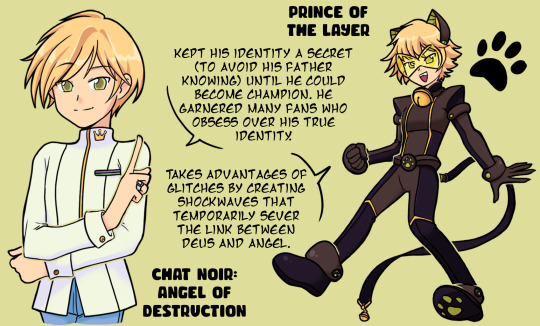

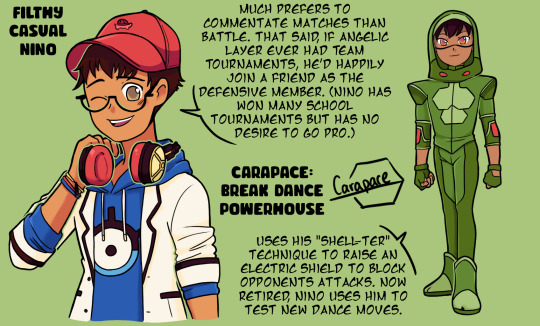
A thousand years ago (or really just 1 year ago) I talked about an Angelic Layer AU. Starting with our main group, here are some Angels with their Deus’. I’m not 100% sure how to make a completely narrative with these characters since Angelic Layer is just a tournament arc and very little else, but I had fun creating “uniforms that aren’t uniforms” for the characters.
Bad Girls
Inner Zodiac
Outer Zodiac
Ko-fi | Patreon
#angelic layer au#ml au#crossover au#my art#marinette#ladybug#adrien#chat noir#alya#rena rouge#nino#carapace#alau#alau art
4K notes
·
View notes
Photo




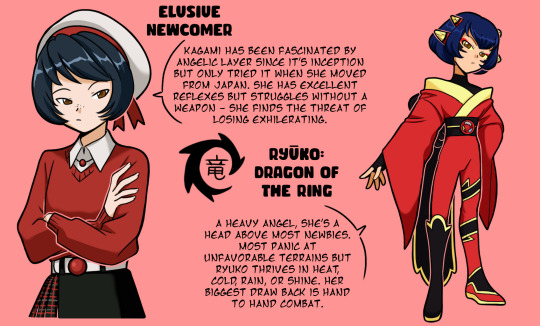
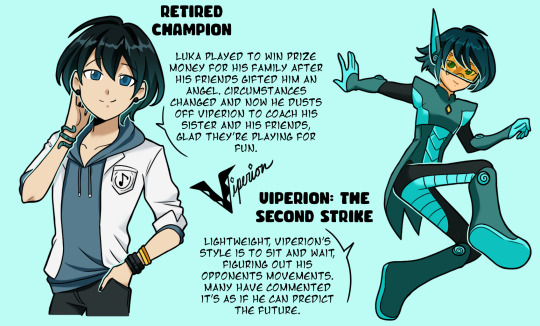
The first half of the zodiac - for a tournament style series, it’s basically guaranteed that not everyone is going to be an amazing, devoted player, so some have been delegated to casual players, retired players, and newbs. It was fun thinking of ways to incorporate the canon Miraculous powers into a battle strategy.
Main 4
Bad Girls
Outer Zodiac
Ko-fi | Patreon
#emulating the style of the show doesn't leave a lot open for different body types so I did my best#not to mention characters with 'non anime hair' rip Ivan and Kim#angelic layer au#my art#ml au#crossover au#mylene#polymouse#ivan#minotaurox#alix#bunnix#juleka#purple tigress#tigresse pourpre#kagami#ryuko#luka#viperion#edit: fixed an error in Kagami's bio#alau#alau art
3K notes
·
View notes